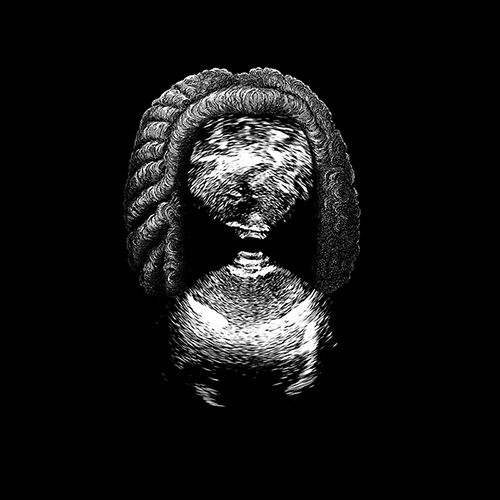
Bach: recomposed соберёт три способа работы с памятью.
Музыкальное приношение:
Александр Немтин (1936—1999) посвятил жизнь реконструкции сохранившегося в эскизах грандиозного «Предварительного Действа» А.Н.Скрябина. Canon perpetuus на энигматическую Thema Regium является одной из частей его Концерта для органа соч.10 (1968). Детально разработанная Бахом мелодия получает современную дискретизацию в загадке нового бесконечного канона; через три почти столетия тема – как луч – отражается в волшебном зеркале.
Искусство фуги:
Золтан Гёнч (*1958) совершил подвиг, сравнимый с открытиями лингвистов, сумевших расшифровать письменность древних народов. Подобно тому, как скульптор Герасимов воссоздавал внешний вид человека по сохранившимся фрагментам, или как мы пользуемся расшифровкой генома и Big Data, оперируя со «ставшим», изменяя свои представления о прошлом = само прошлое, Гёнч разрешил за 15 лет трудов величайшую загадку в истории музыки, воссоздав существующий в отрывке Последний контрапункт в виде Четверной фуги, исходя из открытой им в произведении математической модели «матрицы перестановок».
Чакона:
Борис Филановский (*1968) мыслит свой вариант Чаконы Баха (2022) не как романтическую транскрипцию или современную деконструкцию, а как ещё один метод работы с памятью – рекомпозицию. Ему удалось избежать противоречий с Буквой и Духом и вырастить насыщенную по сравнению со скрипичным оригиналом мануальную ткань произведения, по словам композитора так, «как если бы Бах написал его для органа», делая это с таким естественным правом, что трудно задумываться о степени приближения к инварианту.
Два начальных трека исполнены на современном органе. Чакона реализована с такими переменами в звучании и приёмами игры, как если бы она исполнялась на баховском инструменте. Вторая половина альбома сыграна на органе финской мастерской Martti Porthan в С.—Петербурге, имеющем своим прототипом орган-памятник работы Готтфрида Зильбермана в тюрингском Пёнице (1737). Так мы совершаем ещё одно путешествие во времени — модерный опус Немтина отправляется в прошлое звучать в барочном гештальте и реконструкция Гёнча получает аутентичное баховскому письму воплощение.
Даниил Процюк
Bach: recomposed will bring together three ways to work with memory.
Musical offering:
Alexander Nemtin (1936-1999) devoted his life to the reconstruction of the grandiose “Preliminary Action” by A.N. Scriabin, preserved in sketches. Canon perpetuus on the enigmatic Thema Regium is one of the movements of his Organ Concerto Op.10 (1968). The melody developed in detail by Bach receives a modern sampling in the riddle of a new endless canon; After almost three centuries, the theme – like a ray – is reflected in a magic mirror.
The Art of Fugue:
Zoltan Gönc (*1958) accomplished a feat comparable to the discoveries of linguists who were able to decipher the writing of ancient peoples. Just as the sculptor Gerasimov recreated the appearance of a person from surviving fragments, or how we use genome decoding and Big Data, operating with what has become, changing our ideas about the past = the past itself, Göncz solved the greatest mystery in the history of music in 15 years of work , recreating the Last counterpoint existing in the passage in the form of a Quadruple Fugue, based on the mathematical model of the “permutation matrix” he discovered in the work.
Chaconne:
Boris Filanovsky (*1968) thinks of his version of Bach’s Chaconne (2022) not as a romantic transcription or modern deconstruction, but as another method of working with memory – recomposition. He managed to avoid contradictions with the Letter and the Spirit and developed the rich manual texture of the work in comparison with the violin original, according to the composer, “as if Bach had written it for the organ,” doing this with such natural right that it is difficult to think about the degree of approximation to invariant.
The two opening tracks are performed on a modern organ. The chaconne is implemented with such changes in sound and playing techniques as if it were performed on a Bach instrument. The second half of the album was played on the organ of the Finnish workshop Martti Porthan in St. Petersburg, which has its prototype as a monument organ by Gottfried Silbermann in Pönitz, Thuringia (1737). So we take another trip through time – Nemtin’s modern opus goes back to the past to sound in a baroque gestalt, and Göncz’s reconstruction receives an embodiment authentic to Bach’s writing.
Daniil Protsyuk